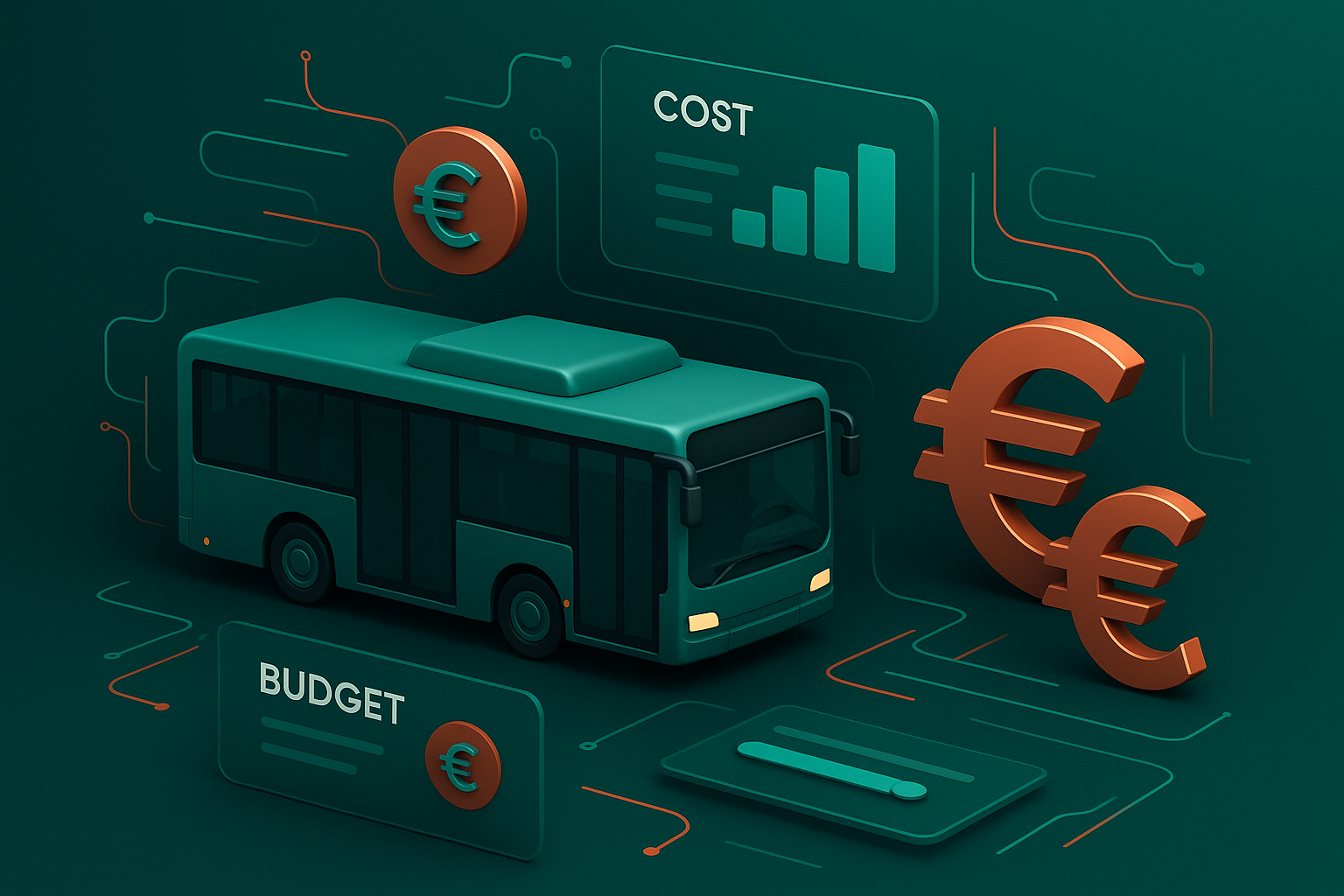What are the costs involved in setting up a public transport supervision system?

Cost: a key concern for mobility decision-makers
Investing in a modern supervision system is now both a strategic and financial decision. Whether you're a local authority or a transport operator, the question of cost comes up immediately.
How much does it cost? Where are the real expenses? Are there lighter, more flexible solutions available?
The good news is that thanks to digital advances, real-time supervision has become much more accessible than it used to be. But to make informed decisions, it’s important to understand where the costs are and how to keep them under control.
Onboard equipment: do you still need it?
Traditionally, supervision systems required the installation of heavy hardware in every vehicle:
- GPS boxes
- antennas
- driver screens
- embedded servers at the depot
- and often third-party installation services
That meant high purchase and installation costs, plus ongoing maintenance.
But today, some solutions like Pysae work entirely without proprietary onboard hardware. A smartphone with a driver app is enough to track and manage the vehicle in real time.
This reduces both upfront investment, delays in deployment, and technical dependency.
It's often the biggest cost-saving opportunity in a project.
Software model: license or SaaS?
Two main pricing models exist:
- Traditional licensing, with a one-time fee and yearly maintenance costs
- SaaS (Software-as-a-Service), with a fixed annual subscription that includes everything
At Pysae, we offer a transparent annual subscription tailored to your fleet size and operational needs.
With SaaS, you benefit from:
- a predictable yearly budget
- continuous feature updates
- no local server or IT maintenance
- the flexibility to scale the system up or down easily
It’s the ideal option for launching or upgrading a supervision solution without heavy capital spending.
Setup, data configuration and integration
Some platforms require a complex and time-consuming integration process, especially when it comes to customizing reports, connecting to ticketing systems, or complying with open data standards like GTFS-RT.
With a well-designed tool like Pysae, this phase is streamlined:
- most configurations can be handled by the operations team
- setup is completed in a matter of days
- imports are simple and compatible with existing data formats
This reduces both costs and delays at launch.
Training and onboarding
Training is often overlooked in project budgets.
Complex systems may require several days of sessions, and that can impact daily operations and staff schedules.
Solutions designed with field teams in mind, like Pysae, offer a smoother experience:
- drivers and dispatchers are trained in under two hours
- support teams are available to assist when needed
- online guides and tutorials are always accessible
This means faster adoption and fewer training costs.
Maintenance and technical support
Legacy systems often charge extra for:
- updates and new versions
- hardware maintenance
- support outside regular hours
With a SaaS platform like Pysae, all support and updates are included in your subscription.
There are no hidden fees, and your system evolves without disruption.
That makes daily operations simpler and support more responsive.
Pysae’s approach: cost control without compromise
Our goal at Pysae is to make modern supervision accessible for all transport networks.
We offer:
- an annual flat-rate subscription based on the size of your fleet
- no upfront hardware investments
- an application-based approach for fast deployment
- optional modules if your operations grow in complexity
This lets operators and local authorities digitize their operations without a heavy financial commitment.
In summary
Setting up a public transport supervision system no longer requires a huge investment or complex technology.
With a modern, flexible platform, you can gain real-time visibility, improve passenger service, and report efficiently to your transport authority.
The real question isn’t how much it costs
It’s how quickly your network can benefit from smarter, data-driven operations.

